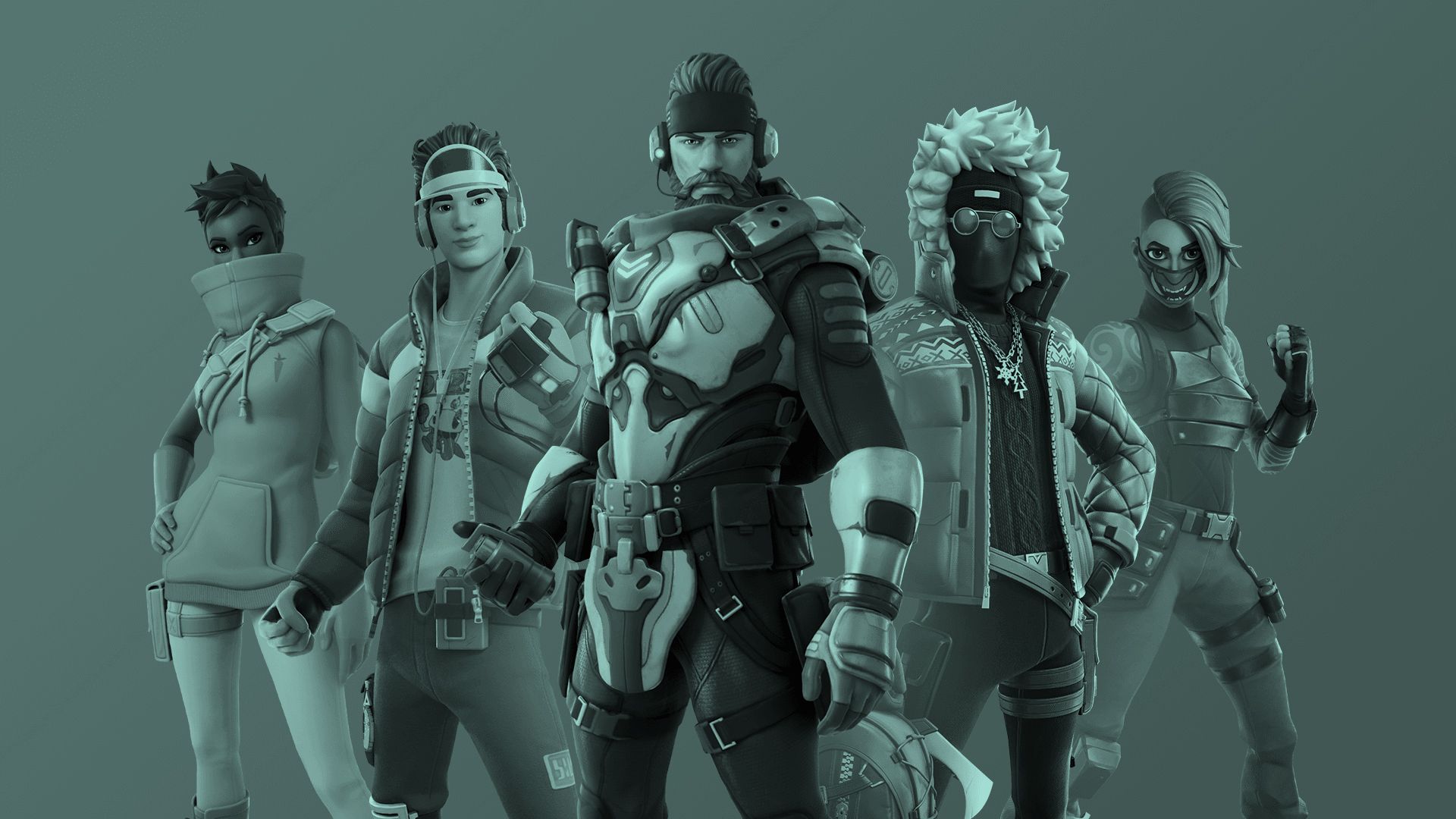As Verse nears, Sweeney gives gloomy VR view
Sorry, no Fortnite tips in this Epic-focused issue.

Hi folks!
Here's this week's Virtual Vector, which I'm guessing has arrived between some early OOO notifications and upcoming flight reminders for many of you. Feels like things are slowing down fast for the end of 2022, so here's another short one. As I said last week, I plan to keep weekly issues coming through the rest of December. My finals aren't over yet, hence the Wednesday release. Also, my class schedule for next semester is nearly set and it's looking like Wednesday might need to become the norm moving forward–watch this space.
One more thing: I want to kick things off with a prompt this week. If you're buying anything VR-related as a gift yourself or someone you know, or if you're using AR for some holiday shopping decisions, I'd like to hear about it! Email me at mathew@virtualvector.xyz if you want to share.
An Epic two-fer
Say it ain't so, Tim–coming off a new interview and some characteristically candid followup tweets, there's been a lot of talk around Epic Games' CEO saying that Fortnite won't make the leap to VR. As we'll go deeper on in the next section, Tim Sweeney's comments here as reason to doubt his other metaverse plans related to Fortnite, but this should halt speculation about any VR run-ins with Peely for the foreseeable future.
"The magic of Fortnite since 2018 has been that all players can play any mode together across all platforms," Sweeney tweeted in response to a thread kicked off by Myles Dyer last Friday. "In a group of friends, people own different devices. If VR required special modes, groups would be fragmented." This hypothetical of Fortnite needing separate VR modes stems from a question Sweeney asked earlier: whether there's "a good VR game with fast shooter style player movement that doesn’t induce widespread motion sickness?"
No matter which popular, movement-heavy non-shooter VR game a person might hold up to suggest Sweeney's asking the wrong sort of question here, I think you'd be hard pressed to come up with a sample size that might sway Epic. Fortnite attracts tens of millions of players for the same core battle royale across a wide range of devices, and for all the work that's been done with comfort and locomotion in recent years, Sweeney's lack of interest in adding VR to that list makes sense. There's no magic bullet for VR motion sickness. Epic would need to invest in costly development work to do a decent job of a conversion, and right now it would likely only add a few million players to Fortnite's player count, tops.
Sweeney added that the alternative–cordoning off VR players to account for balance and comfort changes–would "would likely lead to smaller-audience VR modes failing unless they were so amazing that they caused 10M's of people to go out and buy headsets." Let's be clear about one thing here: at least as Fortnite is concerned, that's the kind of scale that Epic wants to start seeing before VR would be anything more than a hypothetical.
Fortnite aside, I think this additional bit from Sweeney deserves some thought:
Thanks. We embraced the idea with Robo Recall and took it to what we felt was the limit at the time. Nowadays, my view has shifted to the following: games with full locomotion are just way better. So, if VR can't hold its own as a game-design-neutral display device, it'll fail.
— Possibly Tim Sweeney (@TimSweeneyEpic) December 11, 2022
Beyond just games, this idea of design-neutrality determining whether VR will soar or sink gets us into the problem of what needs to come first: a mass audience for immersive content, or wearable hardware that better substitutes for other screens.
My guess is that you can't get to the latter without the former. It's not as though early personal computers and smartphones were great ways to experience media that wasn't originally designed for them; they rose to prominence because they were able to let us do and experience other things, and then over time they became better tools for all manner of activity. While Epic waits to see how VR scales from here, I think it'll be the teams unbothered by design neutrality who'll really determine how big the market can become.
Venturing into Verse
Simon Peyton Jones recently delivered the first lengthy talk on Verse, Epic’s fledgling metaverse programming language, at the annual Haskell eXchange conference in London. A video of the talk was uploaded on Monday alongside a paper on Verse's core calculus and Jones's (delightfully Comic Sans-typeset) presentation slides. Jones, who left a longtime research post at Microsoft to join Epic's Verse team last year, has spent decades helping steward the Haskell functional programming language.
With Verse planned to become an open language used first for scripting with Fortnite, then Unreal more broadly, and eventually the metaverse, Epic is also aiming to make Verse a language that new users can pick up easily. At the same time, as Jones notes in his talk, Verse is an attempt to "kick functional logic programming out of the lab and into the mainstream." In an interview earlier this year, Jones described Verse as a language Tim Sweeney was dreaming up for about a decade that the team is now trying to "reverse engineer out of Tim’s head and get it set down in a kind of formal semantics that everybody else can make sense of."
It's very much a work in progress. Jones's presentation and paper on Verse are deeply technical and all about the language itself, less so the "why" behind it, and so I'll admit I'm in over my head when it comes to judging the pros and cons of the language features Jones discusses. But Haskell happens to be the first language I really sank my teeth into back when I studied programming in undergrad, and that was very much an "in the lab" experience. It's why I've received a lot of blank stares and "huhs" over the years when I tell all manner of developers–across VR/AR, games, apps, web, etcetera–that Haskell was the first language I was taught. Though influential on other languages, I don't know how many people you'll find advocating for teaching programming newcomers Haskell first (as it happens, the class I learned it in has since switched to being taught with Python).
Assuming Sweeney and company are on solid ground with regards to all the technical reasons for why creating a language like Verse is solid groundwork for the metaverse, you still have to wonder about other practical aspects. The biggest question is whether or not Epic and any other supporters of Verse will be able to quickly build up the kind of on-ramp and support system of documentation and tutorials for the language that'll help it thrive in the long run.
We may get a feel for Verse's initial reception and rollout soon. Epic plans to ship the long-awaited Unreal Editor for Fortnite next month, and Sweeney promises tutorials around Verse in early 2023.
More news:
- You can find a recap of all the VR gaming announcements from last week's UploadVR Winter Showcase right here.
- With the trial now underway, the battle between the FTC and Meta over the acquisition of Within has surfaced details on "Operation Twinkie," a proposed partnership between Beat Saber and Peloton. Meta's Rade Stojsavljevic testified that while he made the proposal, it was never formalized. [Katie Paul and Diane Bartz / Reuters]
- Last week, Varjo held a launch event for the XR-3 Focal Edition headset, a simulators and training-focused variant designed to improve readability of text and interfaces for [Official site]
- After recently securing a $7.6 million Series A raise, motion capture glove company StretchSense has named Chris Simard as its new Chief Revenue Officer. [Press release]
- VR flight simulator company VRM Switzerland is now Loft Dynamics, and announced a raise of $20 million along with the rebrand. [Sam Sprigg / Auganix]
- Rec Room is kicking off a promotional collaboration with Mattel's Masters of the Universe franchise starting tomorrow. [Scott Hayden / Road to VR]
- One last note on Epic: a new group of Epic MegaGrant recipients for 2022 were announced earlier this week, and there's a few immersive tech/metaverse-related projects in the lineup. [Official site]
An earlier version of this issue incorrectly attributed the header image.

